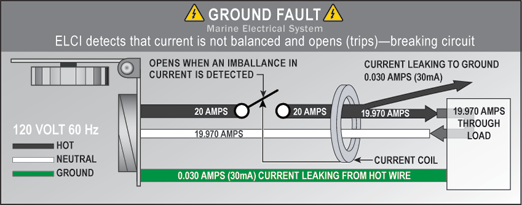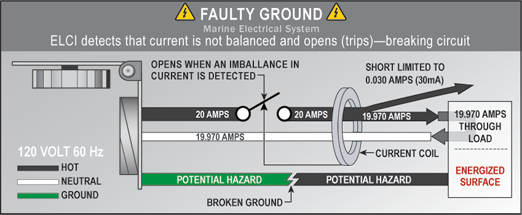A metal that is very near and dear to most boaters hearts, is the boater bling, stainless steel. Someone had asked me today why his stainless steel hardware had rust stains, my answer was, stainless steel corrodes. He was shocked to here this. Many believe that this metal does not corrode. While it does not corrode like it's softer cousin, carbon steel, it still has the ability to discolor and also corrode.
So, if you have been asking "Why are my zincs disappearing?", the next topic on Corrosion will help you find out why but also how to help protect your precious boat from many of the different threats.
So, if you have been asking "Why are my zincs disappearing?", the next topic on Corrosion will help you find out why but also how to help protect your precious boat from many of the different threats.
Stainless Steel (here comes the blah, blah, blah) is defined as a steel alloy with a minimum of 10.5 - 11% chromium content by mass. Stainless steel does not stain, corrode, or rust as easily as ordinary steel, but it is not stain-proof. It is also called corrosion-resistant steel. Stainless steels contain sufficient chromium to form a passive film of chromium oxide, which prevents further surface corrosion and blocks corrosion from spreading into the metal's internal structure.
The stainless steel alloys with AISI (American Iron and Steel Institute) numbers of 300 or above contain more nickel than those with numbers below 300, and have better seawater resistance. These 300-series alloys are very corrosion resistant, and are used for architectural applications, boat topside fittings, and household goods such as sinks and silverware. The 300-series alloys will usually show no appreciable corrosion in fresh water or sea water atmosphere (this does not include saltwater submersion).
As a sailor, I can give numerous examples of stainless steel corroding in crevices or places that oxygen cannot reach. After removing numerous chain plates that penetrate the hull or decks of sailboats in every instance, there was corrosion on the surface that goes through the deck. Often the corrosion was to the point of cracking or breaking the fitting. All other parts of the chain plate were shiny and clean with the exception of the small section just below the top of the deck, where oxygen had been depleted.
When a stainless steel component is exposed to salt water, it becomes susceptible to corrosion due to the lack of oxygen and the addition of chlorides in the water. In most cases, stainless steel will be destroyed from the inside out. This is because the corrosion starts inside the crevice where it can’t be seen, then proceeds inside the metal where there is no oxygen, sometimes hollowing out the part or giving it the appearance of Swiss cheese.
One of the best 300-series stainless steels is type 316. Even this alloy will, if unprotected, will start corroding if located in moist saltwater areas or any tight crevice, starved for oxygen. If water flows fast past stainless steel, more oxygen is delivered to the stainless steel and it corrodes less. For this reason, stainless steels have been successfully used for impeller blades and propellers. These need to be protected from corrosion when there is no flow.
Passivation
Passivation is the spontaneous formation of a hard non-reactive surface film that inhibits further corrosion. When stainless steel is passivated, it is put into a bath of an oxidizing acid, such as nitric acid. It was observed that when stainless steels were first treated with an oxidizing acid, they would later appear to corrode less than if they had not been treated. It was thought that the oxidizing acid somehow thickened the passive film on the stainless steel to make the steel more corrosion resistant. Therefore, the treatment was called passivation. We now know that this treatment doesn’t affect the passive film in a way that lasts very long in water.
Why does stainless steels appear to corrode less after passivation? The oxidizing acid treatment is essentially a cleaning process that removes small particles of iron and other impurities that have gotten on the surface of the stainless steel during the rolling process, or are in the structure of the stainless steel itself and happen to be protruding from the surface. These particles corrode in waters that normally don’t corrode stainless steels, leaving behind rust or other corrosion products that are readily visible. It looks like the stainless steel is corroding when, in fact, it is only the surface particles that corrode. Cleaning these particles off with the acid treatment means that they will not later corrode and leave behind ugly rust spots. It therefore seems that the stainless steel is corroding less. Some people believe that surface particle corrosion can start pitting corrosion, but controlled tests show that pitting will still happen even if all of these particles are removed.
Passivation is the spontaneous formation of a hard non-reactive surface film that inhibits further corrosion. When stainless steel is passivated, it is put into a bath of an oxidizing acid, such as nitric acid. It was observed that when stainless steels were first treated with an oxidizing acid, they would later appear to corrode less than if they had not been treated. It was thought that the oxidizing acid somehow thickened the passive film on the stainless steel to make the steel more corrosion resistant. Therefore, the treatment was called passivation. We now know that this treatment doesn’t affect the passive film in a way that lasts very long in water.
Why does stainless steels appear to corrode less after passivation? The oxidizing acid treatment is essentially a cleaning process that removes small particles of iron and other impurities that have gotten on the surface of the stainless steel during the rolling process, or are in the structure of the stainless steel itself and happen to be protruding from the surface. These particles corrode in waters that normally don’t corrode stainless steels, leaving behind rust or other corrosion products that are readily visible. It looks like the stainless steel is corroding when, in fact, it is only the surface particles that corrode. Cleaning these particles off with the acid treatment means that they will not later corrode and leave behind ugly rust spots. It therefore seems that the stainless steel is corroding less. Some people believe that surface particle corrosion can start pitting corrosion, but controlled tests show that pitting will still happen even if all of these particles are removed.
The reason for the passivation treatment now becomes clear. It makes the stainless steel look prettier after it has been exposed to the water for a while. It actually doesn’t affect the corrosion of the stainless steel itself, however. The treatment is fairly cheap, and usually doesn’t hurt anything, so manufacturers usually go ahead and do it, just to avoid later questions about "rust" spots forming on their stainless steel.
Knowing all this, the stains that we see on the exposed areas of our 316 stainless steel boat jewelry will most likely be surface stains, however if the stains appear to be spreading from a connection, bolt or weld, the problem is likely more severe. The areas that we should be more concerned with are the ones that we cannot see, like the back sides of chain plates, under washers or places that fiberglass might cover, that is where you will find the real degradation.
Hopefully this will be help you find the problem areas before it becomes serious.
Knowing all this, the stains that we see on the exposed areas of our 316 stainless steel boat jewelry will most likely be surface stains, however if the stains appear to be spreading from a connection, bolt or weld, the problem is likely more severe. The areas that we should be more concerned with are the ones that we cannot see, like the back sides of chain plates, under washers or places that fiberglass might cover, that is where you will find the real degradation.
Hopefully this will be help you find the problem areas before it becomes serious.














